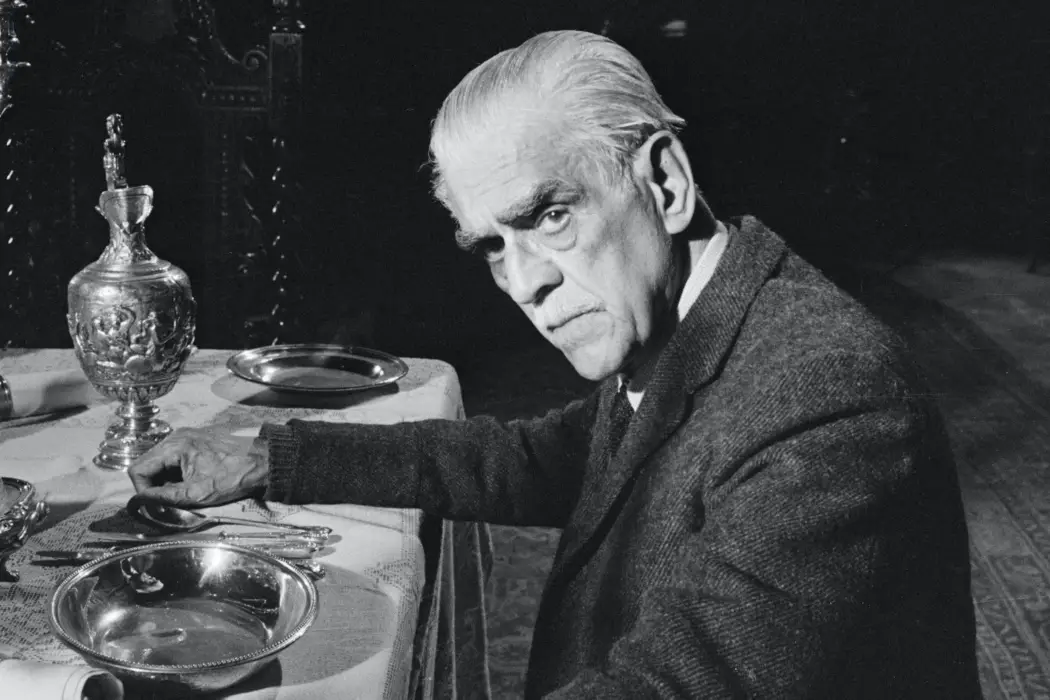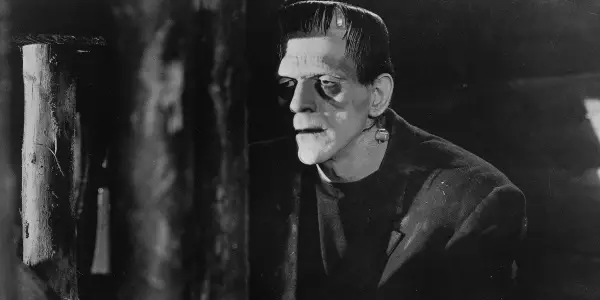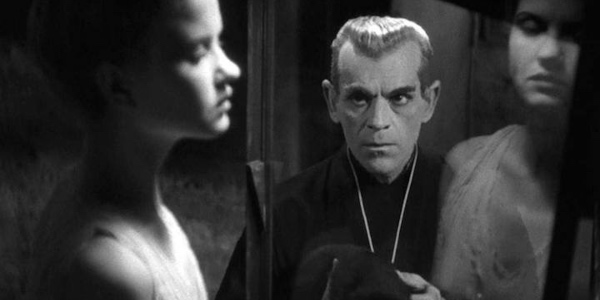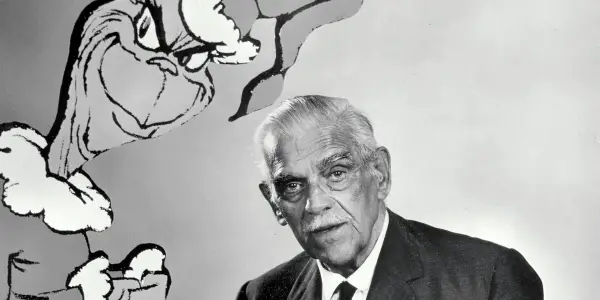BORIS KARLOFF: THE MAN BEHIND THE MONSTER: A Moving Tribute To A Legend

Stephanie Archer is 39 year old film fanatic living in…
In the world of horror, especially in its early years, there are names synonymous with the genre – Lon Chaney, Vincent Price, Jamie Lee Curtis, John Carpenter – their performances and films are classic examples of the talent and achievement of film. And while many find themselves memorable within a decade or a moment, others become legends for a lifetime. Enter Boris Karloff
While Boris Karloff: The Man Behind the Monster may be a straightforward documentary, marking the staples of his career and life, it evolves into something so much more. Elevating itself above dictation, this documentary transforms into a love letter to the man behind the legend, capturing the wonder and inspiration that still exists today.
The introduction to Boris Karloff: The Man Behind the Monster is quick, touching briefly upon his time as Frankenstein, but focusing mainly on his final years, fondly referred to as his renaissance. There is a feeling of wonderment and honor that radiates from the film’s initial talking heads as they fondly recall his final years, his daughter Sarah Karloff giving the first image of the man behind the monster as she remembers a call she received from her father, Boris Karloff stating he believed he had made something wonderful and his excitement to share it with her and her children. The film was the timeless classic How the Grinch Stole Christmas.
The Monster
From the moment, Boris Karloff: The Man Behind the Monster spends its first third of the film crafting the monster. Whereas other documentaries’s take the traditional route of going back to the beginning, ie childhood, the film decides to go to the beginning, his career-defining performance as Frankenstein – the role that would make him a household name.

The documentary is unafraid to weave a bit between the years, speaking of Frankenstein while allowing the talking heads to speak of their observations and insights. It is unafraid to go a little back in the past to size up what brought Karloff to the moment of the monster, defying a straightforward linear structure. While it does yield to this framework a majority of the time, it is not strictly thankfully committed to it.
As the story of Karloff’s involvement in Frankenstein is peeled away one layer at a time, there is a wholesome nature to the depiction of this career-changing film. It is not overly saturated with strictly Karloff, embracing the history of the making of the film itself. Where much of the history brings us back to Karloff, there are elements surrounding the film itself that make it a more encompassing documentary.
As the film begins to leave the monster behind and move forward in Karloff’s career, it transitions smoothly once more into breaking the traditional linear biographical coverage of an individual’s life.
The Man
After the early works of Karloff are established, the film takes us back to the beginning. It is an interesting direction for the documentary to take, as the immediate coverage of his most known work takes away the anticipation of Frankenstein, allowing viewers to bypass the waiting that could work as a distraction, while also allowing a more gentle welcoming of newcomers who may have only known Karloff for the Monster.

This directionality is important as well in the crafting of the man. For many, Karloff is the monster and the eternal face of Frankenstein. For others, it is the Mummy. A man bound by performance and make-up, embracing what is most familiar early, allows for the ability to then reveal the individual behind the mask.
As viewers begin to hear of his childhood and upbringing, his influences in theater, and his ability to embrace risk and opportunity, audiences begin to understand that the success of the monster was not a stroke of luck, but years of hard work, dedication, and knowledge of self. As we see the theater fulfill the needs of a child, viewers come to understand the internal passion that would grow, its flames forever fanned in the years and decades to come. This was a man who lived for his art.
The Legend
As the film moves into his later years, there is a strong sense of the winds of change ruminating through the film. Where the Production Code changed the nature of many of the horror films he once partook in, by the mid-late 40s, horror films had seemingly disappeared. Yet, with a strongly established sense of passion and determination, it is no surprise to viewers that Karloff stays afloat within a sea of change.

And as the nature of horror changes, so too does the ideals and desires of Karloff. As he finds himself in a rut and at fear of being typecast, he pushes to reach further, embracing more psychological horror and reuniting with the stage. Broadway sees Karloff bring a memorable performance to life in Arsenic and Lace, Peter Pan and The Lark, for which he would win a Tony for his incredible performance.
He would also embrace the introduction of TV, hosting the series Thriller, performing for TV movies and performing on a series of variety shows. There was nothing ever seen as below the man, Karloff living for the performance. Even in the moments when his health most afflicted him, he lived by the mantra “the show must go on”.
Conclusion
Boris Karloff: The Man Behind the Monster brings to a new generation a legend while capturing the inspiration and passion so many have already fallen in love with. The film, broken into three parts, brings to life not only the monster but the man who would become a legend. Boris Karloff: The Man Behind the Monster is not only a love letter to the passion exhibited by its subject but an encapsulation of an inspiration that still lives on today.
What are your favorite Boris Karloff films? Let us know in the comments below!
Does content like this matter to you?
Become a Member and support film journalism. Unlock access to all of Film Inquiry`s great articles. Join a community of like-minded readers who are passionate about cinema - get access to our private members Network, give back to independent filmmakers, and more.













